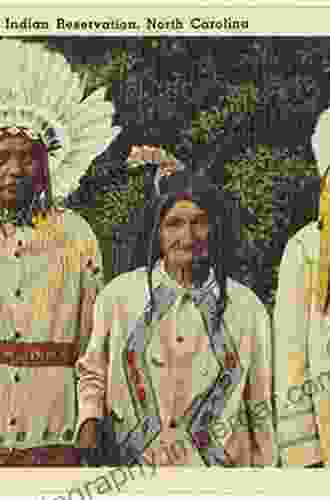Unveiling the Broken Landscape: The Interplay between Indian Tribes and the Constitution

Within the annals of American history, the relationship between Indian tribes and the Constitution has been a tumultuous tapestry woven with both hope and despair. The Constitution, heralded as the supreme law of the land, has often fallen short in its promises to the indigenous peoples of this nation, leading to a broken landscape of unresolved grievances and shattered dreams.
The Peculiar Nature of Tribal Sovereignty

4.9 out of 5
| Language | : | English |
| File size | : | 1829 KB |
| Text-to-Speech | : | Enabled |
| Screen Reader | : | Supported |
| Enhanced typesetting | : | Enabled |
| Word Wise | : | Enabled |
| Print length | : | 424 pages |
| Lending | : | Enabled |
At the heart of this conflict lies the concept of tribal sovereignty, a unique form of self-governance that has been recognized and affirmed by the Constitution. Unlike states or municipalities, tribes possess the inherent right to govern themselves according to their own laws, customs, and traditions. This autonomy extends to a wide range of matters, including land use, natural resource management, and taxation.
However, the extent and interpretation of tribal sovereignty have been subject to constant debate and legal challenges. The Constitution's Supremacy Clause, which declares federal law supreme over state law, has often been invoked to limit tribal authority. This has resulted in a complex legal framework that is often contradictory and difficult to navigate for both tribes and federal agencies.
A Legacy of Broken Promises
Throughout American history, federal policies towards Indian tribes have been marked by a pattern of broken promises and betrayals. Treaties, signed with the utmost solemnity, have been violated or ignored. Promises of land, resources, and protection have been broken time and again.
One of the most egregious examples is the Trail of Tears, a forced removal of over 100,000 Native Americans from their ancestral lands in the southeastern United States. This tragic episode, orchestrated by the federal government, resulted in the deaths of thousands and left a lasting scar on the nation.
The Enduring Struggle for Justice
Despite these setbacks, Indian tribes have never ceased in their struggle for justice. Legal battles, protests, and acts of civil disobedience have all been employed to assert their rights and demand recognition of their inherent dignity.
In recent decades, there have been some notable victories in this struggle. The Indian Child Welfare Act of 1978 protects the rights of American Indian children and families. The Native American Graves Protection and Repatriation Act of 1990 requires the repatriation of Native American cultural items to tribes.
However, many challenges remain. The rate of poverty among Native Americans is still far higher than the national average. Healthcare, education, and housing are often inadequate. Environmental pollution continues to threaten tribal lands and communities.
The Unfinished Promise
The Constitution, while imperfect, remains a symbol of hope and a promise of equality for all Americans. Yet, for Indian tribes, the promise of the Constitution has been too often broken.
The broken landscape of Indian-federal relations is a testament to the enduring legacy of colonialism and the ongoing struggle for justice. As a nation, we must confront this history and work towards reconciliation and healing.
The book "Broken Landscape: Indians, Indian Tribes, and the Constitution" offers a comprehensive exploration of this complex and important topic. Through historical analysis, legal commentary, and firsthand accounts, the book sheds light on the challenges and triumphs of Indian tribes as they navigate the complexities of American law and society.
By understanding the broken landscape, we can work towards a more just and equitable future for all Americans.
4.9 out of 5
| Language | : | English |
| File size | : | 1829 KB |
| Text-to-Speech | : | Enabled |
| Screen Reader | : | Supported |
| Enhanced typesetting | : | Enabled |
| Word Wise | : | Enabled |
| Print length | : | 424 pages |
| Lending | : | Enabled |
Do you want to contribute by writing guest posts on this blog?
Please contact us and send us a resume of previous articles that you have written.
 Book
Book Novel
Novel Page
Page Chapter
Chapter Text
Text Story
Story Genre
Genre Reader
Reader Library
Library Paperback
Paperback E-book
E-book Magazine
Magazine Newspaper
Newspaper Paragraph
Paragraph Sentence
Sentence Bookmark
Bookmark Shelf
Shelf Glossary
Glossary Bibliography
Bibliography Foreword
Foreword Preface
Preface Synopsis
Synopsis Annotation
Annotation Footnote
Footnote Manuscript
Manuscript Scroll
Scroll Codex
Codex Tome
Tome Bestseller
Bestseller Classics
Classics Library card
Library card Narrative
Narrative Biography
Biography Autobiography
Autobiography Memoir
Memoir Reference
Reference Encyclopedia
Encyclopedia Marc R Benioff
Marc R Benioff Gary D Solis
Gary D Solis David Livingstone Smith
David Livingstone Smith Jon Stroud
Jon Stroud Garry L Landreth
Garry L Landreth June Pearton
June Pearton Francesca Romana Onofri
Francesca Romana Onofri Phil Rich
Phil Rich Jill Childs
Jill Childs Robert H Patton
Robert H Patton Robert L Holmes
Robert L Holmes Stewart Giles
Stewart Giles Farhan Qureshi
Farhan Qureshi Franz Hartmann
Franz Hartmann Flavio Salvati
Flavio Salvati Milt Gross
Milt Gross Steve Hughes
Steve Hughes Keith Crane
Keith Crane Franklin D R Kestner
Franklin D R Kestner Fred Morton
Fred Morton
Light bulbAdvertise smarter! Our strategic ad space ensures maximum exposure. Reserve your spot today!

 Gabriel MistralReimagining the Future of American Healthcare: A Comprehensive Guide to...
Gabriel MistralReimagining the Future of American Healthcare: A Comprehensive Guide to... George BellFollow ·19.4k
George BellFollow ·19.4k Devin RossFollow ·16.4k
Devin RossFollow ·16.4k Jackson HayesFollow ·12.8k
Jackson HayesFollow ·12.8k Darnell MitchellFollow ·5.4k
Darnell MitchellFollow ·5.4k Christian CarterFollow ·8.3k
Christian CarterFollow ·8.3k Marvin HayesFollow ·9k
Marvin HayesFollow ·9k Simon MitchellFollow ·8.5k
Simon MitchellFollow ·8.5k Winston HayesFollow ·2.5k
Winston HayesFollow ·2.5k

 Alexander Blair
Alexander BlairBecoming Sports Agent Masters At Work: The Ultimate Guide
What is a Sports...

 Xavier Bell
Xavier BellUnveiling the Enchanting World of Upper Bohemia: A Review...
A Captivating...

 Chris Coleman
Chris ColemanUnveiling the Secrets: Extreme Rapid Weight Loss Hypnosis...
In the relentless pursuit of a slimmer,...
4.9 out of 5
| Language | : | English |
| File size | : | 1829 KB |
| Text-to-Speech | : | Enabled |
| Screen Reader | : | Supported |
| Enhanced typesetting | : | Enabled |
| Word Wise | : | Enabled |
| Print length | : | 424 pages |
| Lending | : | Enabled |
















